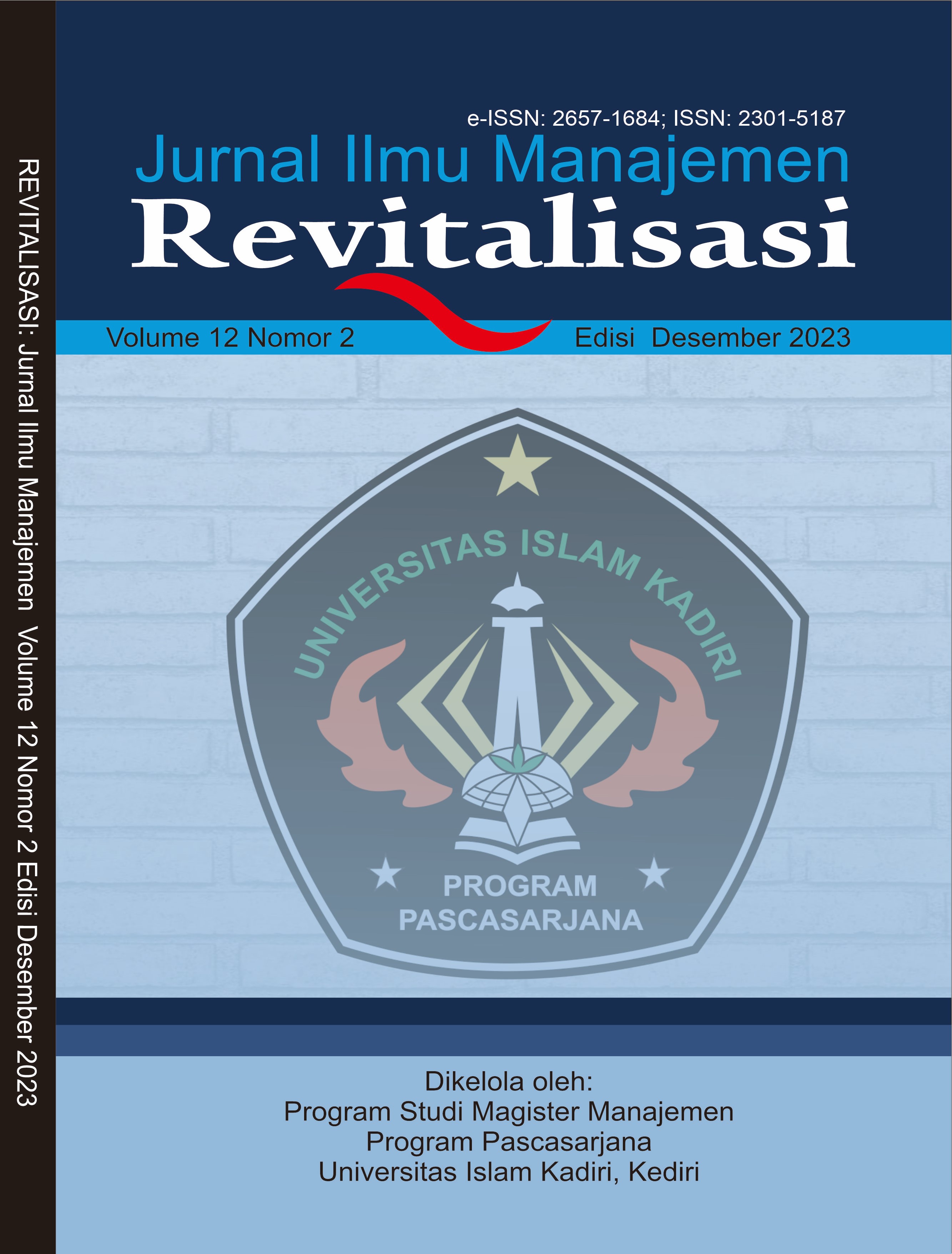Adopsi E-Wallet: Utaut2 Diperluas Dengan Kepercayaan
Abstract
Electronic money means the latest financial innovation for payment transactions in Indonesia. There are a variety of electronic wallets in Indonesia offered by banks and non-banks which make it easy for users to carry out transactions via smartphone. This research will review the ability to influence consumer behavioral intentions towards e-wallet services, with the aim of measuring, as well as increasing,acceptance of these systems and customer adoption. The model used for this analysis, Unified Theory of Acceptance and Use of Technology2 (UTAUT2), additional ideas are presented here to replace Social Influence factors with Trust factors to facilitate individual views regarding behavioral intentions in the consumer environment. This research uses a quantitative approach with Purposive Sampling techniques. Samples are collected using an online questionnaire with 262 respondents, data analysis using (PLS-SEM). The research results show that the intention to use e-wallet is influenced by Effort Expectancy, Performance Expectancy, Price Value, Habit,and Trust. On the other hand, Hedonic Motivation, Facilitating Conditions, and Habit have no effect.
References
Akhmadi, M. Denaldi Danial, and Erni Martini. “Pengaruh E-Service Quality Terhadap Kepuasan Dan Loyalitas Pelanggan Aplikasi Ovo.†Jurnal Mitra Manajemen 4, no. 5 (2020): 708–20. https://doi.org/10.52160/ejmm.v4i5.385.
Alalwan, Ali Abdallah, Yogesh K. Dwivedi, and Nripendra P. Rana. “Factors Influencing Adoption of Mobile Banking by Jordanian Bank Customers: Extending UTAUT2 with Trust.†International Journal of Information Management 37, no. 3 (2017): 99–110. https://doi.org/10.1016/j.ijinfomgt.2017.01.002.
Badri, Muhammad. “Adopsi Inovasi Aplikasi Dompet Digital Di Kota Pekanbaru.†Inovbiz: Jurnal Inovasi Bisnis 8, no. 1 (2020): 120. https://doi.org/10.35314/inovbiz.v8i1.1335.
Gharaibeh, Malik Khlaif, Muhammad Rafie Mohd Arshad, and Natheer K. Gharaibh. “Using the UTAUT2 Model to Determine Factors Affecting Adoption of Mobile Banking Services: A Qualitative Approach.†International Journal of Interactive Mobile Technologies 12, no. 4 (2018): 123–34. https://doi.org/10.3991/ijim.v12i4.8525.
Hair, J. F. H, J. J. Risher, M. Sarstedt, and C. M. Ringle. “The Results of PLS-SEM Article Information.†European Business Review 31, no. 1 (2018): 2–24.
Hair, Joe F., Christian M. Ringle, and Marko Sarstedt. “PLS-SEM: Indeed a Silver Bullet.†Journal of Marketing Theory and Practice 19, no. 2 (2011): 139–52. https://doi.org/10.2753/MTP1069-6679190202.
Henseler, Jörg, Christian M Ringle, and Marko Sarstedt. “A New Criterion for Assessing Discriminant Validity in Variance-Based Structural Equation Modeling,†2015, 115–35. https://doi.org/10.1007/s11747-014-0403-8.
Leslie, Harco, Hendric Spits, Yulia Lanita, and Andhika Prasetyo. “Smart Integrated Payment System for Public Transportation in Jakarta†6, no. 3 (2017): 241–49. https://doi.org/10.11591/eei.v6i3.655.
Lin, Hsiu Fen. “An Empirical Investigation of Mobile Banking Adoption: The Effect of Innovation Attributes and Knowledge-Based Trust.†International Journal of Information Management 31, no. 3 (2011): 252–60. https://doi.org/10.1016/j.ijinfomgt.2010.07.006.
Lok, Chun Kit. Adoption of Smart Card-Based E-Payment System, 2015.
Luna, Iviane Ramos de, Francisco Liébana-Cabanillas, Juan Sánchez-Fernández, and Francisco Muñoz-Leiva. “Mobile Payment Is Not All the Same: The Adoption of Mobile Payment Systems Depending on the Technology Applied.†Technological Forecasting and Social Change 146, no. August (2019): 931–44. https://doi.org/10.1016/j.techfore.2018.09.018.
Merhi, Mohamed, Kate Hone, and Ali Tarhini. “A Cross-Cultural Study of the Intention to Use Mobile Banking between Lebanese and British Consumers: Extending UTAUT2 with Security, Privacy and Trust.†Technology in Society 59, no. June (2019): 101151. https://doi.org/10.1016/j.techsoc.2019.101151.
Putra, Arman Syah, Mety Titin Herawaty, and Nurul Aisyah. “Kuantitatif Method,†n.d., 360–66.
Sugiyono, S., & Lestari, P. (2021). Metode penelitian komunikasi (Kuantitatif, kualitatif, dan cara mudah menulis artikel pada jurnal internasional).
Tak, Preeti, and Savita Panwar. “Using UTAUT 2 Model to Predict Mobile App Based Shopping: Evidences from India.†Journal of Indian Business Research 9, no. 3 (2017): 248–64. https://doi.org/10.1108/JIBR-11-2016-0132.
Venkatesh, Viswanath, James Y. L. Thong, and Xin Xu. “C Onsumer SEBUAH CCEPTANCE DAN U SE OF Saya NFORMASI T Echnology : E XTENDING THE U NIFIED T HEORY.†MIS Quarterly 36, no. 1 (2012): 157–78.

This work is licensed under a Creative Commons Attribution 4.0 International License.
 This work is licensed under a Creative Commons Attribution 4.0 International License
This work is licensed under a Creative Commons Attribution 4.0 International License




















